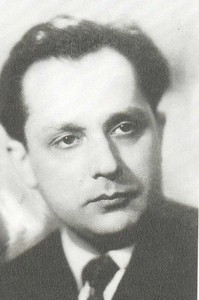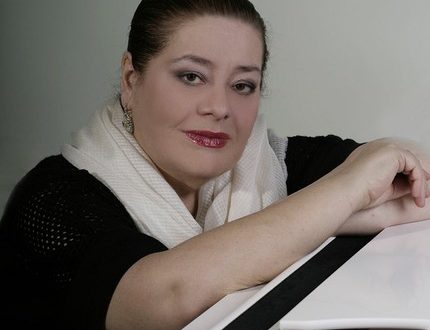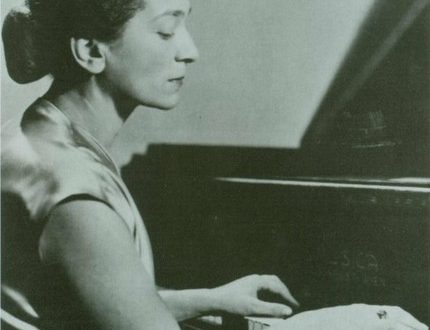
Victor Karpovich Merzhanov (Victor Merzhanov) |
Victor Merzhanov

On June 24, 1941, state exams were held at the Moscow Conservatory. Among the graduates of the piano class of S. E. Feinberg is Viktor Merzhanov, who simultaneously graduated from the conservatory and the organ class, where A. F. Gedike was his teacher. But the fact that it was decided to put his name on the marble Board of Honor, the young pianist learned only from the teacher’s letter: by that time he had already become a cadet of a tank school. So the war tore Merzhanov away from his beloved work for four years. And in 1945, as they say, from a ship to a ball: having changed his military uniform to a concert suit, he became a participant in the All-Union Competition of Performing Musicians. And not just a participant, he became one of the winners. Explaining the rather unexpected success of his student, Feinberg wrote then: “Despite the long break in the work of the pianist, his playing not only did not lose its charm, but also acquired new virtues, greater depth and integrity. It can be argued that the years of the Great Patriotic War left an imprint of even greater maturity on all his work.
- Piano music in the Ozon online store →
According to the figurative words of T. Tess, “he returned to music, as a man returns from the army to his home.” All this has a direct meaning: Merzhanov returned to the conservatory house on Herzen Street to improve with his professor in graduate school (1945-1947) and, upon completion of the latter, begin teaching here. (In 1964, he was awarded the title of professor; among Merzhanov’s students were the Bunin brothers, Yu. Slesarev, M. Olenev, T. Shebanova.) However, the artist had one more competitive test – in 1949 he became the winner of the first Chopin competition after the war in Warsaw. By the way, it can be noted that in the future the pianist paid considerable attention to the works of the Polish genius and achieved considerable success here. “Delicate taste, excellent sense of proportion, simplicity and sincerity help the artist convey the revelations of Chopin’s music,” stressed M. Smirnov. “There is nothing contrived in Merzhanov’s art, nothing that has an external effect.”
At the beginning of his independent concert work, Merzhanov was largely influenced by the artistic principles of his teacher. And critics have repeatedly drawn attention to this. So, back in 1946, D. Rabinovich wrote about the game of the winner of the all-Union competition: “The pianist of a romantic warehouse, V. Merzhanov, is a typical representative of the S. Feinberg school. This is felt in the manner of playing and, no less, in the very nature of the interpretation – somewhat impulsive, exalted at moments. A. Nikolaev agreed with him in a review of 1949: “Merzhanov’s play largely shows the influence of his teacher, S. E. Feinberg. This is reflected both in the tense, excited pulse of movement, and in the plastic flexibility of the rhythmic and dynamic contours of the musical fabric. However, even then reviewers pointed out that the brightness, colorfulness and temperament of Merzhanov’s interpretation comes from a natural, logical interpretation of musical thought.
… In 1971, an evening dedicated to the 25th anniversary of Merzhanov’s concert activity took place in the Great Hall of the Moscow Conservatory. His program consisted of three concerts – Beethoven’s Third, Liszt’s First and Rachmaninoff’s Third. The performance of these compositions belongs to the significant achievements of the pianist. Here you can add Schumann’s Carnival, Mussorgsky’s Pictures at an Exhibition, Grieg’s Ballad in G major, plays by Schubert, Liszt, Tchaikovsky, Scriabin, Prokofiev, Shostakovich. Among the Soviet works, one should also mention the Sonatina-Fairy Tale by N. Peiko, the Sixth Sonata by E. Golubev; he constantly plays arrangements and arrangements of Bach’s music made by S. Feinberg. “Merzhanov is a pianist with a relatively narrow but carefully worked out repertoire,” V. Delson wrote in 1969. “Everything he brings to the stage is the product of intense reflection, detailed polishing. Everywhere Merzhanov affirms his aesthetic understanding, which can not always be accepted to the end, but can never be rejected, because it embodies at a high level of performance and with great inner conviction. Such are his interpretations of Chopin’s 24 preludes, the Paganini-Brahms Variations, a number of Beethoven’s sonatas, Scriabin’s Fifth Sonata, and some concertos with an orchestra. Perhaps the classical tendencies in Merzhanov’s art, and above all the desire for architectonic harmony, harmony in general, prevail over romantic tendencies. Merzhanov is not prone to emotional outbursts, his expression is always under strict intellectual control.
Comparison of reviews from different years makes it possible to judge the transformation of the artist’s stylistic image. If the notes of the forties speak of the romantic elation of his playing, impulsive temperament, then the performer’s strict taste, sense of proportion, restraint are further emphasized.
Grigoriev L., Platek Ya., 1990





